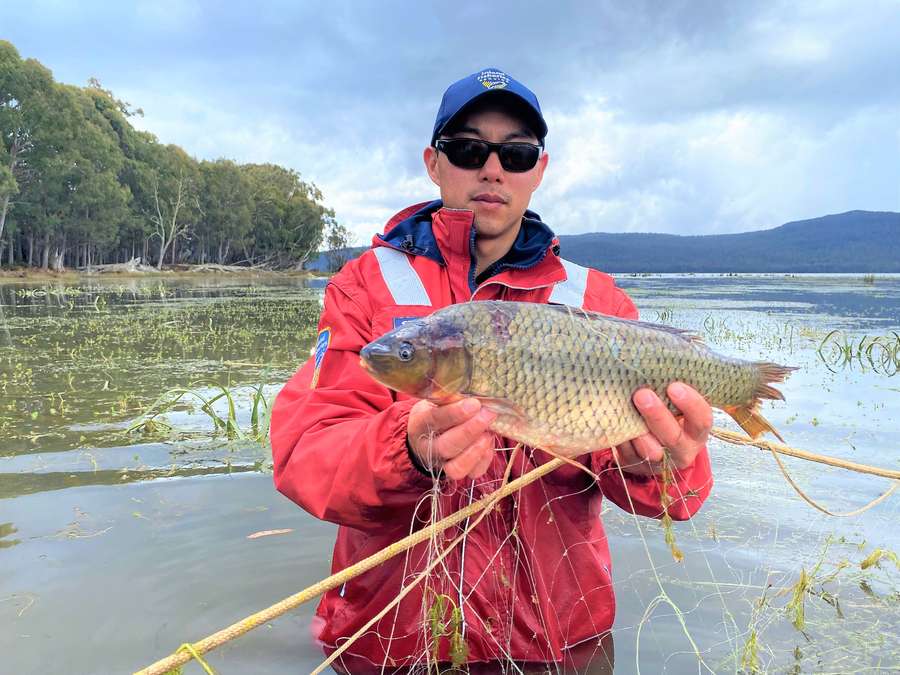Carp Functionally Eradicated from Tasmania!

The Inland Fisheries Service (IFS) is extremely excited to announce that after an intensive 28 year program, it has functionally eradicated common carp (Cyprinus carpio), meaning the few, if any, remaining carp in Lake Sorell are unable to breed!
The invasive carp were confirmed in lakes Crescent (23km2) and Sorell (53km2) in 1995. These large lakes have wetlands of state, national and international significance and are home to the endemic golden galaxias (Galaxias auratus). The Carp Management Program (CMP) was established by the IFS in response to this incursion. The last carp in Lake Crescent was caught in 2007 with eradication announced in 2009. Since then, efforts were diverted to the much larger Lake Sorell.
Using the proven strategies implemented in Lake Crescent, techniques were modified to suit the more expansive Lake Sorell. These techniques included intensive gill netting, biotelemetry, electro-fishing, spawning habitat barriers and traps. From 1995 to 2023, 41,504 carp were removed from Lake Sorell and 7,797 from Lake Crescent.
Eradication efforts in Lake Sorell were assisted by the jelly gonad condition (JGC) in male carp, which causes sterility. IFS has determined that any remaining carp in Lake Sorell are likely to be either female or JGC males. The last fertile male was caught in the 2018-19 season with only a single female carp captured in the 2022-23 season.
Annual juvenile carp surveys in Lake Sorell have not detected any evidence of recruitment since 2013. This is despite ideal environmental conditions for carp spawning in spring 2016, 2021 and 2022, highlighting their inability to breed.
The IFS will monitor Lake Sorell to confirm eradication and undertake educational campaigns on the threats invasive species pose to Tasmania.
Based on the recovery of the Lake Crescent fishery, the coming season provides a great opportunity for anglers to reunite with Lake Sorell and for the younger generation to experience for the first time.